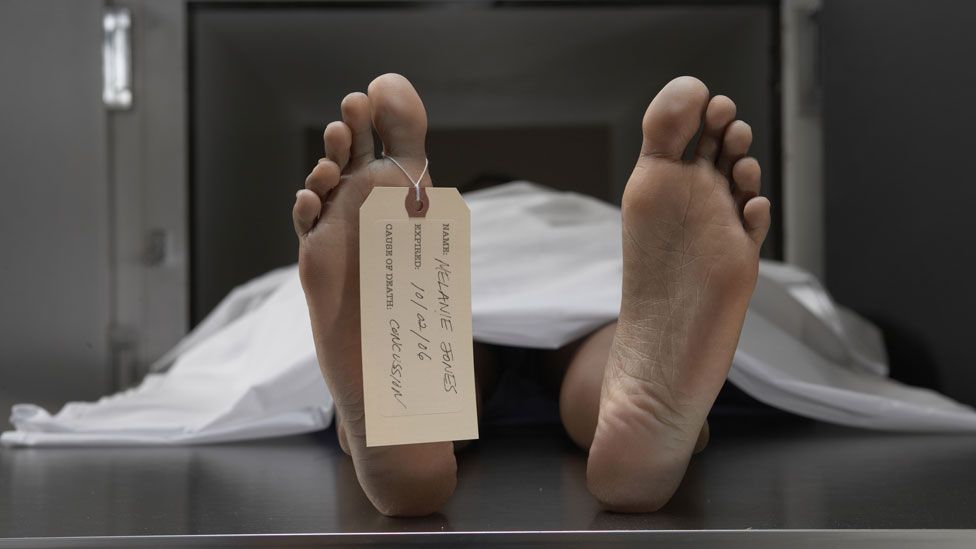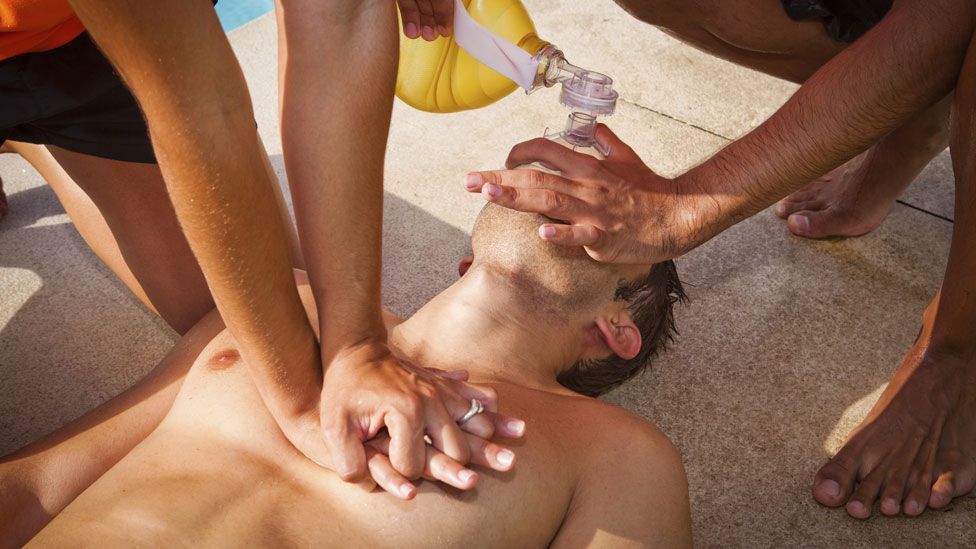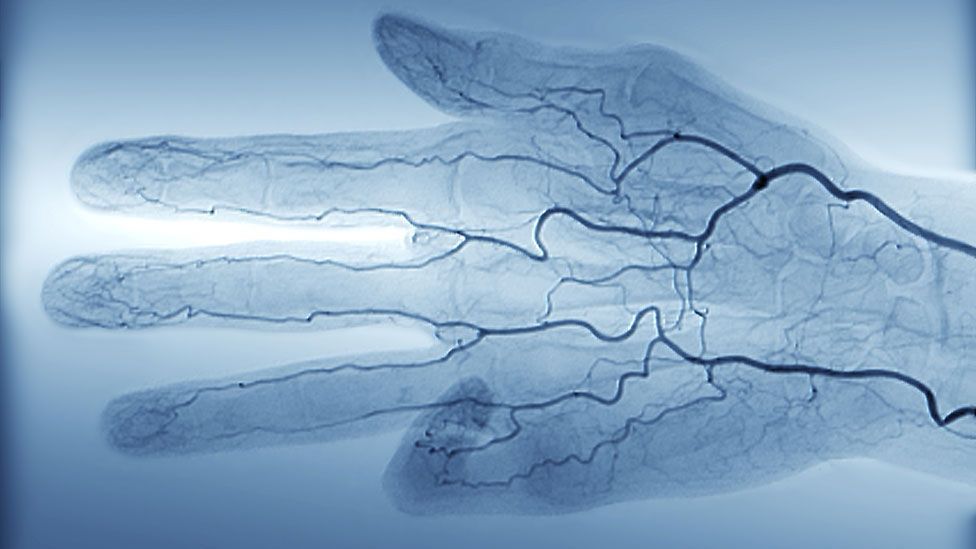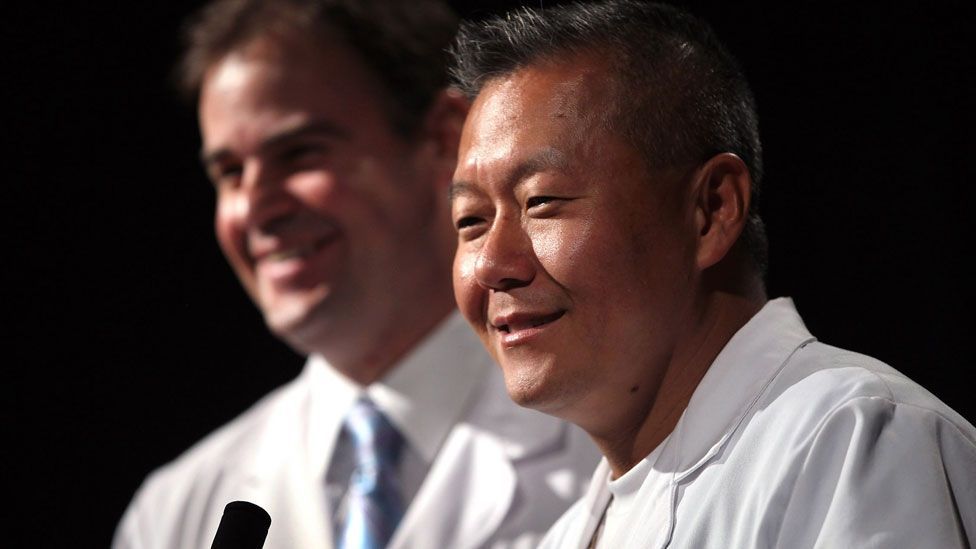When People Try to Look for Ways to Have the Deceased Person Alive Again
The ultimate improvement: Bringing the dead dorsum to life

A radical process that involves replacing a patient'southward blood with common cold table salt water could remember people from the brink of death, says David Robson.
"When yous are at 10C, with no brain activeness, no heartbeat, no blood – everyone would agree that you're expressionless," says Peter Rhee at the University of Arizona, Tucson. "Just nosotros can still bring you back."
Rhee isn't exaggerating. With Samuel Tisherman, at the University of Maryland, College Park, he has shown that it'south possible to go on bodies in 'suspended animation' for hours at a time. The procedure, and then far tested on animals, is most as radical as any medical procedure comes: information technology involves draining the body of its claret and cooling it more than 20C beneath normal torso temperature.
Once the injury is fixed, blood is pumped once over again through the veins, and the torso is slowly warmed dorsum upwardly. "Equally the blood is pumped in, the trunk turns pink right abroad," says Rhee. At a sure temperature, the heart flickers into life of its own accord. "It'due south quite curious, at 30C the heart will beat once, as if out of nowhere, so again – then as it gets even warmer it picks upwards all by itself." Astonishingly, the animals in their experiments show very few ill-furnishings one time they've woken up. "They'd be groggy for a little bit simply back to normal the day after," says Tisherman.
Tisherman created headlines around the globe before this twelvemonth, when he announced that they were set up to brainstorm human trials of the technique on gunshot victims in Pittsburgh, Pennsylvania. The kickoff patients will have been so badly wounded that their hearts have stopped beating, pregnant that this is their concluding promise. "Cheating death with 'suspended blitheness'" is how CNN put it; "Killing a patient to salvage his life" was the New York Times' take.
Hyped up
The news coverage has sometimes offended Tisherman'due south cautious sensibility. During our chat, he comes across equally a thoughtful, measured human, who is careful not to oversell his research. He is particularly wary of using the term 'suspended animation'. "My concern isn't that it's inaccurate – it's that when people remember of the term, they remember nearly infinite travellers being frozen and woken up on Jupiter, or Han Solo in Star Wars," he says. "That doesn't help, because it's important for the public to know it's not science fiction – information technology's based on experimental piece of work and is being studied in a disciplined manner, earlier we use information technology to stop people dying." Rhee, who came to global attention later on treating congresswoman Gabrielle Giffords after a shooting in 2011, tends to exist bolder: he says he wouldn't rule out longer-term suspended animation, in the distant futurity. "What we're doing is kickoff part of that experiment."

The boundary between life and death is increasingly unclear (Thinkstock)
Tisherman's quest to bring people back from the brink of death began at medical school, where he studied nether Peter Safar. It is an inspiring dynasty: in the 1960s Safar had pioneered cardiopulmonary resuscitation (CPR), the at present familiar procedure of applying pressure level to the chest crenel to endeavour to massage the heart back to life.
Safar'due south work began to change our perceptions of death – blurring the point that is meant to mark the end of our lives. "We've all been brought upwards to call back death is an absolute moment – when yous die you can't come dorsum," says Sam Parnia, at the Land Academy of New York in Stony Brook. "It used to be right, simply now with the basic discovery of CPR nosotros've come to empathize that the cells inside your body don't become irreversibly 'dead' for hours after yous've 'died'… Even after you've go a cadaver, y'all're nevertheless retrievable."
Blurred line
Tisherman now thinks of death as the (admittedly subjective) point at which doctors give upwardly resuscitation every bit a lost cause – only fifty-fifty then, some people tin can yet brand a remarkable comeback. Last December, a paper in the periodical Resuscitation caused a stir by suggesting that 50% of surveyed emergency doctors have witnessed 'Lazarus phenomena', in which a patient's middle has begun beating once again by itself, afterward doctors had given up hope.
Kick-starting the eye is only 1 half of the doctor'south battle, still; the lack of oxygen later on a cardiac arrest tin can cause serious harm to the body's vital organs, particularly the encephalon. "Every minute that in that location's no oxygen to those organs, they outset dying," says Tisherman. His erstwhile mentor, Safar, came upward with a solution to this problem also, with 'therapeutic hypothermia', a procedure that involves cooling the body, typically to around 33C by placing ice packs around the body, for instance. At lower temperatures, cells begin to piece of work in tedious move, reducing their metabolism and the damage that could exist caused by oxygen starvation.

Some people have come back from the expressionless, even after CPR has stopped (Thinkstock)
Combined with machines that tin take over apportionment and pump oxygen into the blood stream while the heart is being revived, this has helped open the window between cardiac arrest and brain death. One hospital in Texas recently reported that an 40-year-old man had survived, with his mind intact, after three-and-a-half hours of CPR. His treatment involved a constant rotation of medical students, nurses and doctors taking it in turns to perform the chest compressions. "Everyone in the room who had two artillery was asked to jump in," says ane of the attending doctors, Scott Taylor Bassett. Such cases are rare, notwithstanding: Bassett, points out that they were only motivated to continue considering the patient regained consciousness during the CPR, despite the fact that his heart was still not functioning. "During the chest compressions he would speak to us, showing he was neurologically intact," says Bassett. "I've never seen it before or since – it was the defining moment of the entire decision making."
Buying time
Such long-term resuscitation is currently impossible for people whose cardiac arrest is accompanied past injury from trauma – such every bit gunshot wounds or automobile accidents. At the moment, the surgeon's best option is to clamp the arteries leading to the lower body, earlier opening the chest and massaging the heart, which pushes a little blood flow to the brain while surgeons try to sew together upward the wounds. Unfortunately, the survival rate is less than one in 10.
It is for this reason that Tisherman wants to plunge the torso to effectually 10-15C, potentially giving the doctors a window of two or more hours to operate. Although this level of deep hypothermia is sometimes practical during centre surgery, Tisherman's project is the get-go time that it volition have been exist used to revive someone who had already 'died' before entering the infirmary. Perchance near astonishing of all, the team drain the blood from the body and supercede it with chilled saline solution. Because the body'due south metabolism has stopped, the blood is not required to keep cells alive, and saline solution is the quickest way to cool the patient, explains Tisherman.

The procedure involves replacing all blood in the body with saline solution (SPL)
With Rhee and others, Tisherman has spent two decades building a substantial portfolio of evidence to prove that the procedure is safe, and effective. Many of the experiments involved pigs inflicted with near-fatal injuries. Mid-operation, in that location was no doubt that animals were about every bit far beyond the realms of the living as it is possible to become and then return. "The pig is as white as you tin can get," says Rhee. "It's just stake, refrigerator meat." If the animals had been cooled quickly enough, withal – at around 2C a infinitesimal – nearly 90% recovered when their blood was returned to their bodies, after having lain in limbo for more than an hr. "It'south the nearly amazing thing to witness – when the heartbeat comes back," says Rhee.
Once the animals had returned back to more regular activity, the team then performed several tests to check that their brains hadn't been damaged. For instance, before the process, the researchers trained some of the pigs to open a container of a sure colour, where an apple was hidden within. After they had been revived, most of the animals remembered where to fetch their treat. Other pigs that hadn't been trained earlier the operation, were instead taught the procedure soon afterwards their recovery. They managed to larn just equally quickly as the others – over again suggesting that at that place had been no result on their memories.
Needless to say, gaining approval for homo trials has been a struggle. Earlier this twelvemonth, Tisherman was finally immune to gear up a pilot trial in Pittsburgh to treat patients suffering from gunshot wounds. The hospital sees nigh one or two such patients a month, meaning that some accept already been treated with the technique since the trial began – although it is too early for Tisherman to speak about the results notwithstanding. He is as well setting upward a trial in Baltimore, Maryland, and all being well, Rhee will after exist able to begin work at Tuscon's trauma centre.

Seeing calorie-free at the end of the tunnel is non necessarily the closest to death you can get (Thinkstock)
As with any medical research, at that place will be some challenges in the transition from the creature experiments to the human trials. The animals received their own blood at the end of the performance, for example – whereas the patients in this trial will need transfusions that have been sitting in claret banks for weeks. And while the animals were under anaesthesia at the time of injury, the patients won't have been, which could change the mode their body reacts to the injury. Tisherman remains optimistic, however. "Nosotros generally retrieve that dogs and pigs respond to bleeding in a similar way to humans."
Other doctors are watching with interest. "It's very brave," says Parnia. "Many of us experience that in club to preserve the brain, we have to absurd the trunk a lot more than we've washed traditionally. But people have been afraid."
If the trials go according to programme, Tisherman would like to extend the approach to other kinds of trauma. Gunshot victims were chosen for the initial trial because it is easier to localise the source of claret loss, merely he hopes eventually to treat internal haemorrhage from an automobile blow, for example. It may even, ane twenty-four hours, be used to care for people suffering from middle attacks and other kinds of affliction.

Peter Rhee (right): "It'south the almost astonishing affair to witness – when the heartbeat comes dorsum" (Thinkstock)
Success could also pave the way for investigations into other forms of suspended animation. Some scientists are looking into whether a cocktail of drugs added to the saline solution pumped into trunk could further reduce the trunk's metabolism and forestall injury. One promising candidate was hydrogen sulphide – the chemical that gives rotten eggs their smell – but although it has been found to reduce the metabolism of some animals, there is little evidence that information technology improves their chances of survival later a cardiac arrest. Tisherman instead thinks information technology will be improve to notice some potent anti-oxidants that can mop upwardly the harmful chemicals that cause injury.
For Rhee, the need for better handling is all too urgent. He points out the fate of a patient he saw at the hospital merely the mean solar day before we spoke. "He was shot in the epigastrium, right under the breast in the centre of the abdomen," he says. The infirmary staff tried everything they could, only he still died. "It's exactly the kind of patient we hope we could repair if we'd been able to work in a less rushed fashion."
This commodity is office of a series on "Comebacks". Read more tales of triumphant returns:
Anglophenia: Best of British revivals
From ancient languages to boy bands, these British cultural artefacts vicious out of favour, but were rescued from history's bin.
Autos: The three Wheeler'south return to form
From forgotten oddity to a modern sports auto hero – U.k.'south top 'Mog' is on a roll.
BBC America: A guide to every Doctor Who
Every Doctor has one thing in common - he regenerates. Go up to speed on how each one fabricated the ultimate comeback.
Capital: The comeback kings
They rose to lofty heights and savage mightily. How some one-time giants got back into proficient graces.
Culture: 7 stages of movie distinction
Famous actors often burn down brightly earlier falling on difficult times. Here's how they plough failure into success.
Travel: A new dawn for Italy's south
For the get-go time since the Grand Tour of the 18th Century, southern Italy is registering on savvy travellers' radars.
If yous would like to comment on this, or anything else you have seen on Future, caput over to our Facebook or Google+ page, or message us on Twitter .
Source: https://www.bbc.com/future/article/20140704-i-bring-the-dead-back-to-life
Post a Comment for "When People Try to Look for Ways to Have the Deceased Person Alive Again"